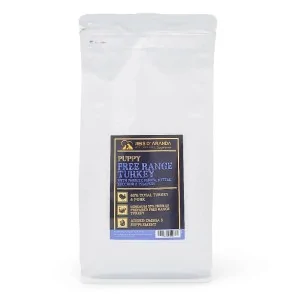Its name says it all: the Vienna blue rabbit comes from Austria. Not only is it beautiful with its shiny blue-grey...
AUJESZKY'S DISEASE
INTRODUCTION
Aujeszky's disease, also known as ‘pseudorabies’, is a potentially fatal disease transmitted by pigs and wild boar, the animals most likely to be infected being dogs belonging to packs or owned by big game hunters.
WHAT IS AUJESZKY'S DISEASE?
Aujeszky's disease (AD), also known as ‘pseudorabies’, is caused by the porcine Herpesvirus type I, presenting with nervous, respiratory or reproductive symptoms depending on the strain of virus, the age of the animal and the infective dose. Morbidity and mortality in epidemic outbreaks is very high, especially in piglets and fattening animals, causing reproductive failure in a high proportion of females that are pregnant at the time of infection. Infection with this virus in non-suidae mammals (except higher primates and man) results in a fatal nervous condition.
WHAT ARE THE SYMPTOMS OF AUJESZKY'S DISEASE?
Aujeszky's disease in dogs is characterised by a hyperacute course. Initial signs include:
- BEHAVIOURAL CHANGES: Lethargy, inactivity, restlessness or aggressiveness, violent rubbing against the floor and walls, self-mutilations.
- OTHER: Vomiting, diarrhoea, secondary dyspnoea, pulmonary oedema, hypersalivation, convulsions and fever.
- PHYSICAL CHANGES: Severe itching of the head (rarely other areas), ulcers, severe swelling, paralysis of facial muscles, self, loss of pupillary reflex, cocking of the head (vestibular syndrome), inability to swallow.
HOW IS AUJESZKY'S DISEASE TRANSMITTED?
Since Aujeszky's disease has been practically eradicated in pigs, in our country the main route of infection for dogs is the consumption of raw meat and offal from infected wild boar and the bite of wild boar killed during hunting. The disease has an incubation period of 2-7 days, from the time the virus enters the dog's body until the first symptoms appear. Sick dogs may show vomiting, diarrhoea, poor appetite, difficulty breathing, nervousness, howling, behavioural alterations, neurological alterations, etc. One of the most obvious symptoms is that many of these animals will show a sudden, very intense itching, impossible to control and located in the place where the virus penetrated, normally on one side of the face. Death occurs less than 24 hours after the first symptoms appear.
HOW IS THE DISEASE DIAGNOSED?
The hyperacute course of the disease means that in most cases the ante-mortem diagnosis of Aujeszky's disease in the dog is presumptive and based on history (contact with wild boar or its remains) and clinical picture.
Definitive diagnosis is post-mortem, usually by PCR on brain tissue. Less frequently, the diagnosis is established by immunohistochemistry or after virus isolation. Serology is generally not useful because the vast majority of animals die or are euthanised before seroconversion occurs.
Haematology and biochemical profile of dogs with Aujeszky's disease are usually unchanged, while cerebrospinal fluid analysis has shown increased protein concentration and mononuclear pleocytosis, suggestive of viral encephalitis, but not specific for Aujeszky's disease.
Considering the clinical picture and course of Aujeszky's disease in dogs, the differential diagnosis should include intoxications (heavy metals, pesticides, ethylene glycol or herbicides), distemper and rabies (when this is a possibility).
CONCLUSION
As there are no preventive vaccines for dogs or cats against this disease, prevention lies in avoiding feeding dogs and cats offal from hunting (especially wild boar) and prompt action at the first sign of disease.
Leave a comment
Log in to post comments
















